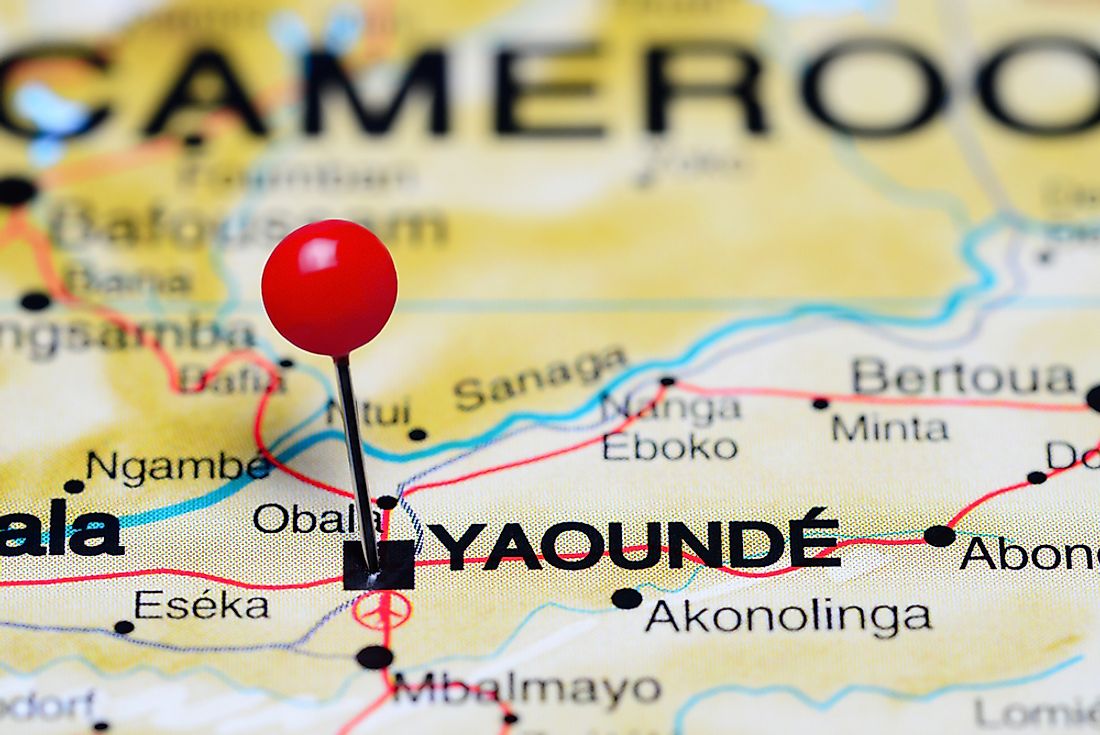What Is The Capital Of Cameroon?

Yaoundé is Cameroon’s second largest city after the port city of Douala. It is also the country's capital with an estimated population of 2.5 million. Yaoundé is located in the central region of the country at an elevation of 2,500 feet above sea level.
History Of The Capital City Of Cameroon
Historically, the city was first established as an outpost of Jeundo or Epsumb by Tappenbeck and Lt. Kund both of whom were German explorers. It was founded at the edge of the forests somewhere between Sanaga and Nyong rivers sometime between 1887 and February 1889 with the permission of Ela Esono’s chiefs. Between December 1889 and May 1895, the area was inhabited by George August Zenker a German botanist who used the place as an agricultural research station known as Jaunde named after the Ewondo people or the local Yaunde inhabitants. Zenker’s settlements became a base for ivory and rubber trade in the area which were purchased from the locals in exchange of iron and imported clothes. In English, the settlement was known as Yaounde Station. In 1895, Major Dominik founded a military garrison at the site permitting for the establishment of a religious school and a Pallotine mission at nearby Mvolye. However, during the First World War Belgian troops from the Congo occupied the site. Following the defeat of Germany in World War I, Yaounde was delegated as the French Colony’s capital in 1922. Compared to Douala, Yaounde experienced rapid growth especially due to unrest along the coast and the cocoa crisis after 1957. Yaounde continued to be the seat of the Republic of Cameroon even after the country gained its independence.
Economy Of Cameroon's Capital City
The city’s economy is mainly based on the administrative system of the diplomatic services and the civil service. It is because of these important central structures that the city prides itself on higher living and security standards compared to other regions in Cameroon. Some of Yaoundé’s major industries include glass goods, dairy products, lumber, clay, tobacco, and beer. The city is also a regional center for the distribution of copra, rubber, cocoa, coffee, and sugar cane. The city’s residents employ urban agriculture; it is believed that there are more than a million chickens and about 50,000 pigs in Yaoundé. Unfortunately, frequent floods kept disrupting the city about 15 to 20 times each year negatively impacting the lives of up to 100,000 citizens at a time. In 2010, Jean Claude Adjessa Melingui the mayor then started a flood reduction project. Four years later, flooding in Yaoundé has been reducing from 15 times a year to three. Additionally, cases of water-borne diseases such as malaria and typhoid reducing to almost half.
Interesting Places To Visit In The Capital Of Cameroon
Yaounde city center is home to the central market, government offices, and several hotels. Most homes owned by Cameroonians are found in Bastos district which in turn is home to the expatriate American and European plus many other continental communities. However, the presidential compound and palace are found in the district of Etoudi. The Cameroon National Museum situated in the former presidential palace is an excellent place for history enthusiasts to learn a little about the country. Other interesting places in the city include the Blacktidue Museum, the Basilique Marie-Renie-des-Aprotes, the Cameroon Art Museum situated in a former Benedictine monastery, Palais des Congres, the sports palace, the Afthemi Museum, the Cathedral Notre Dame des Victoires and the Reunification monument.











